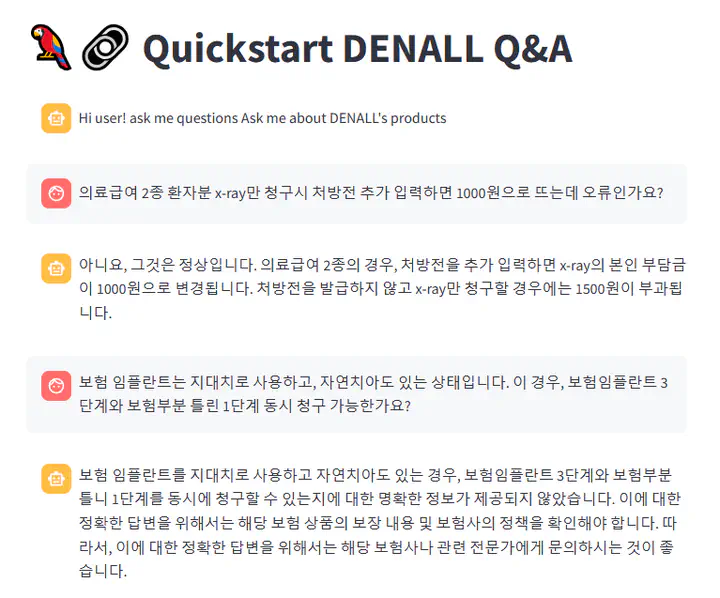Dental Chatbot
 Overview
OverviewGoal⛳️: Developing an In-house Website Chatbot Using RAG
Motivation 📚
- Automate responses to Q&A questions on the site to reduce labor costs.
- Sufficient amount of data available (Number of Q&A entries: about 70,000).
- Training LLMs requires a lot of costs (GPU and power), but with RAG, no training is needed.
Data 🏦

Data Composition
- Question ID
- Question Category
- Question Title
- Question Content
- Answer Content
Data Preprocessing
- Questions or answers that are too short are excluded.
- If a question and answer sequence includes the question in the answer, that entry is removed.
Workflow 👓
- Retriever: Responsible for finding the most relevant information in the database (Vector Store) based on the user’s question.
- Generator (LLM): Generates an answer to the user’s question based on the information retrieved (e.g., ChatGPT, Llama2, Korean language models).
- Embedding Model: A model that vectorizes the document (context).

Experiment setup 🧪
For qualitative evaluation, the system was divided into three levels, as follows:
Level 1: Checking the consistency of evidence materials with the existing questions (Context). (This is used to verify the quality of the vectors and the performance of the retriever.)
- Evaluation Method: Ask the same question used in the context to see if the evidence material includes the question and answer, qualitatively verifying the embedding accuracy.
Level 2: Asking questions similar to the existing ones (Context).
- Evaluation Method: Slightly modify the tone or format of the existing questions to check the system’s sensitivity.
Level 3: Asking questions not used in the context.
- Evaluation Method: Test the system’s operation and results by asking new questions not included in the context.
Experiment Results 👨🔬
Level 1 Experiment Results

- When the same question was asked, the evidence materials included that question, indicating that vector retrieval is working well.
Level 2 Experiment Results

- In most test datasets, evidence materials with similar contexts to the existing questions were predicted.
Level 3 Experiment Results

- The system still struggles to generate accurate answers when asked new questions it has not encountered before.